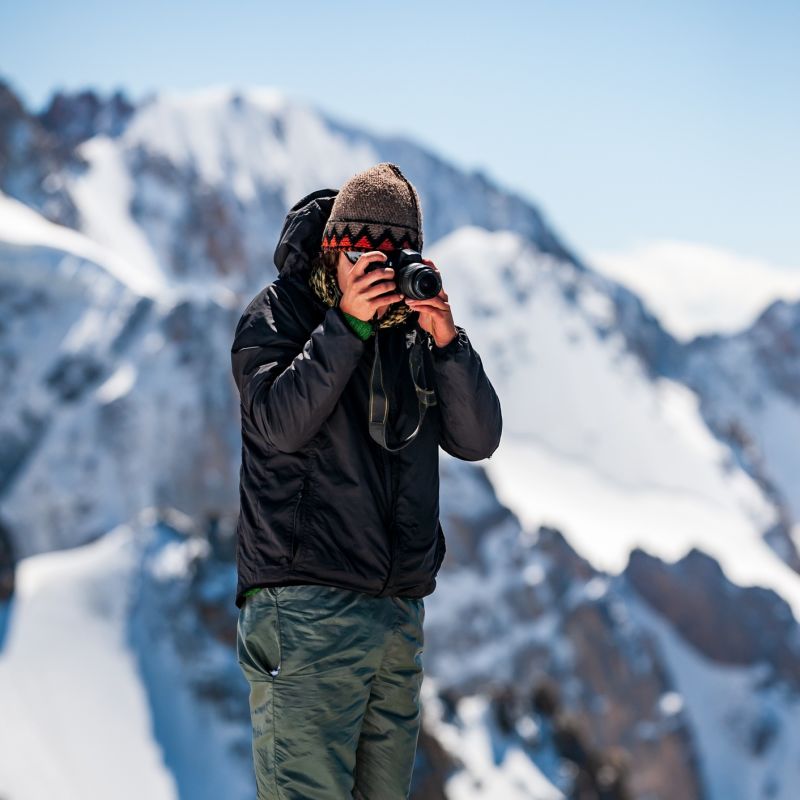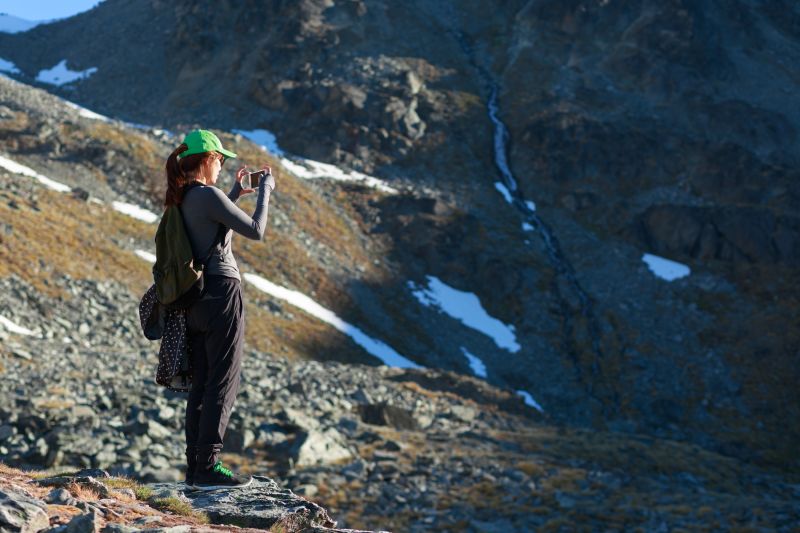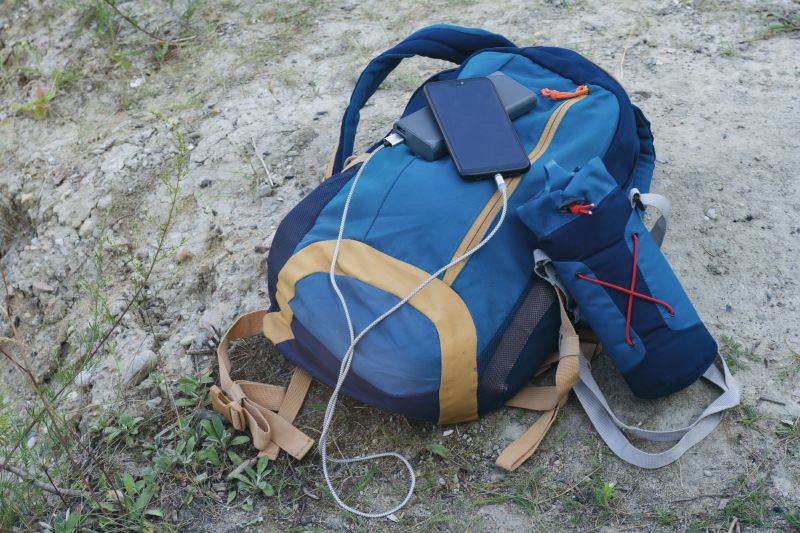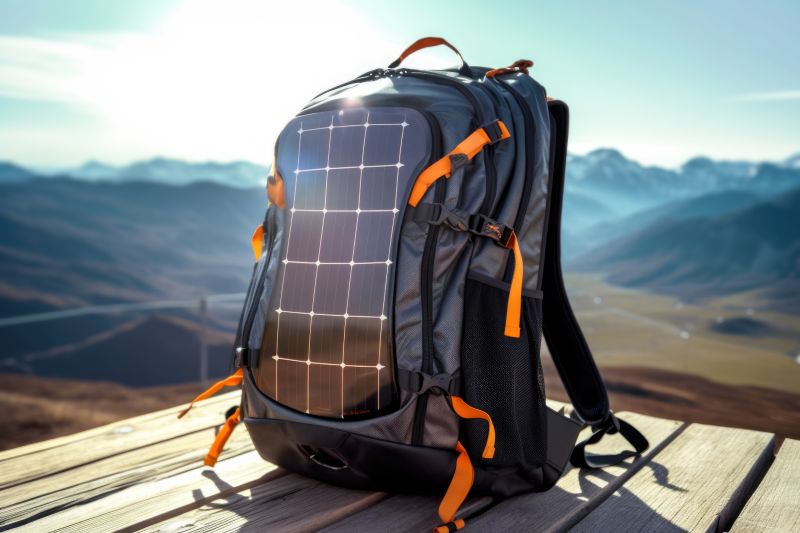You don't have access to electrical outlets on many high-altitude treks around the world, particularly those that lead you into highly remote regions (and aren't those the best ones?).
On some treks, like Nepal's Annapurna Circuit, you stay in lodges and do actually have access to electricity, but the supply can be unreliable.
So if you want to be assured of having the use of all your tech devices throughout your high-altitude trek, however long it may be, then you need to have a plan.
For some devices, this might mean simply packing some extra batteries. For your smart devices, however, it would mean having a power bank (and possibly a solar charger).
So let's talk about these three things to ensure you'll have what you need on your trek and that you've also thought through all of the practicalities ...
All you need to know about batteries
As we mentioned, the usual lifespan of a battery is reduced at high altitude because of the extreme cold.
We're talking here about both traditional cell batteries as well as the lithium-ion batteries that go into Internet-connected or smart devices. (Note that smart devices like smartphones, tablets and GPS watches are often referred to as IoT devices, IoT being short for Internet of Things. Knowing this acronym will help with your online research.)
Given that extreme cold shortens the lifespan of a battery, you want to pack your batteries deep within your backpack where they'll stay as warm as possible. The best place might be tucked into your sleeping bag or a woollen sock that's nestled in the middle of your backpack. Alternatively, if you want to be fancy, you could buy insulated pouches tailored to each device.
At night, pop your batteries into your sleeping bag with you so that your body heat helps to keep them warm.
Think of your batteries as little darlings that need extra attention and care at high altitude, and so tuck them snugly into bed each night.
Given that your cell batteries are going to drain more quickly than is the norm at high altitude, be sure to pack more spares than you usually would for a trek of the same duration done at a lower altitude.
Best cell batteries for extreme cold
If buying AA or AAA batteries for your camera, head torch (lamp) or other gadgets, note that lithium-based ones are the best for super cold climates as they're stable than the alternatives, meaning they perform far better. All of the major brands like Energiser, Duracell and Phillips manufacture them, so they're easy to find.
Tips for conserving batteries
It also makes sense to prolong the life of your batteries as much as possible when on a high-altitude trek to reduce the number of times you'll need to replace or recharge them.
With this in mind, here are a few tips for conserving the batteries in your IoT devices during a high-altitude trek:
- Disable all features (like GPS, Bluetooth and WiFi) when not in use and close all unused apps.
- Keep your screen brightness as low as possible.
- Pop your device into plane mode so that it's not sitting in your backpack trying to find a signal all the time.
- Think carefully before pulling out your device – perhaps it would be better to stay in the moment instead?
Airline regulations for batteries
If you're flying in for a trek, be sure to check with the airline how your various batteries must be transported (for instance, removed from the device and in your hand luggage).
Don't let your batteries be confiscated at the airport
Please be sure to do your due diligence into how the airline (or airlines) you're using to reach your trekking destination require you to pack your various types of batteries. Failure to comply could mean the batteries are confiscated, and then you're in a powerless pickle (pun intended).
For instance, did you know that some airlines won't allow you to carry loose batteries in your hand luggage? Or that a laptop battery in a checked-in bag can be confiscated?
All you need to know about power banks
Power banks, also known as portable chargers, allow you to carry backup energy with you on your trek so that you can charge your devices even when you don't have access to a traditional source of power (like an electrical plug point or outlet).
The small power bank is charging a smartphone.
Powerbanks come in different sizes and have varying power storage capabilities. The length of your trek will determine what you need.
We recommend shopping around a bit for a lightweight, hardy and reliable powerbank that stores a decent amount of power. You don't want a brick of a powerbank if you're carrying lots of trekking gear or there's a weight limit in terms of what you can hand over to someone else to porter for you.
Best powerbanks of 2024
If you'd like specific brand and model recommendations when it comes to finding a reliable and lightweight power bank, you might like to look into the:
- Goal Zero Flip 24
- Nitecore Ultra-Slim Power Bank
- INIU Slim Power Bank
- BioLite Power Bank
We hope it goes without saying to test your powerbank's compatibility with your devices before the trek. And don't forget to pack the connecting cable!
If you're going on a very long trek, your primary concern might be the powerbank's storage capacity (not its weight), in which case you might like to look into the well-reviewed:
- Goal Zero Sherpa 100PD
- Nitecore NB10000 Gen II
- Dark Energy Poseidon Pro 10200
- Anker PowerCore III Elite
All you need to know about solar chargers
A solar charger is an eco-friendly way to capture and store power that you can use to charge certain batteries and devices, including power banks. Some trekkers opt for a solar charger in place of a power bank, while others use it in conjunction with the latter.
The average solar charger has a longer lifespan than a traditional power bank, and it can also charge and discharge power at the same time, amongst other advantages. That said, a solar charger is usually more expensive than a power bank.
Also, importantly, solar chargers rely on the sun showing its face! So some folks love them, while others think they're a waste of time.
Please research the average sunshine for the location and season of your high-altitude trek before investing in one, as the payoff might not be worth it.
We suggest that you never rely solely on a solar charger if having a backup source of power is critical to you on your trek.
Portable solar charger
Solar chargers vary quite a bit in terms of design, size and storage capabilities. For instance, you can find small solar chargers with a loop for clipping onto your backpack (see above) or backpacks with a built-in one (see below).
Backpack with built-in solar charger
The type of solar charger you choose will depend on how much power you think you'll need on your trek for your gadgets. Our best advice is to speak to others who've done the specific trek you have in mind to find out about their experience and what they'd recommend.
That said, two examples of small and reputable solar chargers you could research for your high-altitude trek are the Powerness U36 Power Bank and INIU MegaPower Charger.
And that's the basics on batteries, power banks and solar chargers for high-altitude trekking! We hope it's been helpful. If you're keen to tackle a high-altitude trek, please check out our exciting treks – we offer shorter, introductory treks for neophytes as well as hardcore ones for highly seasoned high-altitude trekkers. If you have any other questions, feel free to schedule a call with the team.















